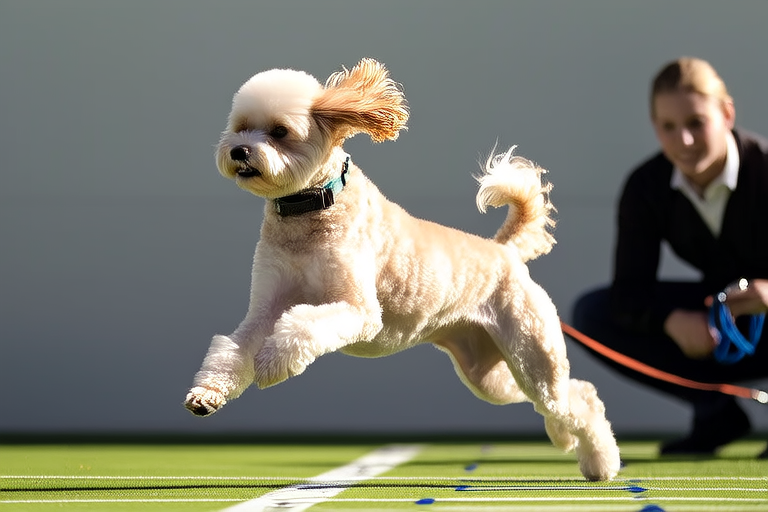Comprehensive Guide to Training an Energetic Poodle
Welcome to your ultimate guide on how to train your energetic poodle! Whether you’re a first-time owner or have had poodles before, this guide will help you understand your poodle’s behavior, teach them essential commands, keep them mentally and physically stimulated, and address common challenges. Let’s get started!
Understanding Poodle Behavior
Poodles are highly intelligent, active, and affectionate dogs. They thrive on attention and interaction with their human companions. Their intelligence means they can quickly learn new behaviors, but it also requires consistent and positive reinforcement to channel their energy into appropriate activities.
One of the most notable traits of poodles is their desire to please their owners. This makes them excellent candidates for obedience training. However, their high energy levels can sometimes lead to mischief if not properly managed. Understanding these characteristics is crucial for effective training.
Essential Basic Commands
Step 1: Start with “Sit”
The “sit” command is one of the first and most important commands to teach your poodle. Begin by holding a treat near your poodle’s nose, then slowly move your hand upwards. As your poodle looks up, their bottom should naturally lower. Say “sit” as they sit down, and immediately reward them with praise and the treat.
Step 2: Teach “Stay”
Once your poodle has mastered “sit,” introduce the “stay” command. Start with short durations and gradually increase the time. Use a verbal cue like “stay” and extend your hand palm outwards. Release your poodle with a release word such as “okay.” Practice in various environments to ensure reliability.
Step 3: Learn “Come”
The “come” command is vital for safety. To teach it, call your poodle’s name followed by “come” in an enthusiastic tone. Reward them with treats and praise when they come to you. Avoid using this command when they’re about to be scolded, as it can weaken its effectiveness.
Step 4: Introduce “Leave It”
This command prevents your poodle from picking up items they shouldn’t. Hold a treat in your closed fist and say “leave it” as your poodle tries to get it. When they stop trying, open your hand and give them a different treat. Repeat this process until they understand.
Step 5: Master “Down”
To teach the “down” command, start with your poodle in a sitting position. Hold a treat close to their nose and slowly move it downwards towards the ground. As they follow the treat with their head, their body should naturally lower into a lying position. Reward them for following through.
Maintaining Energy Through Exercise and Mental Stimulation
Keeping your poodle physically and mentally engaged is crucial for their well-being. Here are some ideas:
- Regular Walks: Daily walks provide both physical exercise and mental stimulation. Vary routes and distances to keep things interesting.
- Interactive Toys: Puzzle toys challenge their minds and reward them with treats.
- Training Sessions: Regular training sessions help maintain their mental sharpness.
- Swimming: Many poodles enjoy swimming, which provides great exercise.
House Training Techniques
Consistency is key when house training your poodle. Establish a routine that includes regular bathroom breaks outside. Praise your poodle when they go in the right place and avoid punishing accidents inside. Usecrate training if necessary, ensuring it’s a safe and comfortable space.
Socialization Methods
Expose your poodle to various people, animals, and environments during their early months. This helps them become well-adjusted and confident adults. Positive experiences should outweigh any negative ones. Puppy classes offer structured socialization opportunities.
Advice for Dealing with Common Training Challenges Specific to Poodles
Challenge 1: Separation Anxiety
Poodles can suffer from separation anxiety. To manage this, establish a routine, provide chew toys, and leave the radio on for company. Gradually increase the time you spend away from home to help them adjust.
Challenge 2: Excessive Barking
Barking is natural for poodles, but excessive barking can be disruptive. Identify triggers and address them. For example, if they bark at passersby, redirect their attention with a toy or treat. Teach the “quiet” command using positive reinforcement.
Challenge 3: Chewing
Chewing is part of a puppy’s exploration phase. Provide appropriate chew toys and supervise interactions. If they chew on something they shouldn’t, calmly redirect them to an approved item.
Challenge 4: Overexcitement
Poodles can become overly excited, especially when greeting visitors. Teach your poodle to greet calmly by rewarding calm behavior. Practice controlled greetings with family members and gradually introduce friends.
Conclusion
Training an energetic poodle is a rewarding experience that strengthens the bond between you and your furry friend. By understanding their behavior, teaching essential commands, keeping them physically and mentally stimulated, properly house training them, socializing them, and addressing common challenges, you’ll set your poodle up for success. Remember, patience, consistency, and positive reinforcement are key. Enjoy the journey!
